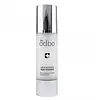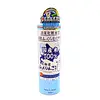What's inside
What's inside
 Key Ingredients
Key Ingredients

 Benefits
Benefits

 Concerns
Concerns

 Ingredients Side-by-side
Ingredients Side-by-side

Water
Skin ConditioningDipropylene Glycol
HumectantDimethicone/Vinyl Dimethicone Crosspolymer
Skin ConditioningAlcohol Denat.
AntimicrobialDimethicone
EmollientCyclomethicone
EmollientCetyl Dimethicone
EmollientSodium PCA
HumectantBetaine
HumectantPentylene Glycol
Skin ConditioningPhenoxyethanol
PreservativePanthenol
Skin ConditioningParfum
MaskingSea Water
HumectantTocopheryl Acetate
AntioxidantButylene Glycol
HumectantDisodium EDTA
Dipotassium Glycyrrhizate
HumectantHydrolyzed Collagen
EmollientCodium Tomentosum Extract
Skin ProtectingEnteromorpha Compressa Extract
Skin ProtectingMacrocystis Pyrifera Extract
Skin ConditioningEcklonia Cava Extract
Skin ConditioningGelidium Cartilagineum Extract
Skin ProtectingLaminaria Japonica Extract
Skin ProtectingGlycerin
HumectantPEG-40 Hydrogenated Castor Oil
EmulsifyingAlgin
MaskingPhenyl Trimethicone
Skin ConditioningHydrogenated Lecithin
EmulsifyingSodium Benzoate
MaskingPotassium Sorbate
PreservativePolysorbate 60
EmulsifyingWater, Dipropylene Glycol, Dimethicone/Vinyl Dimethicone Crosspolymer, Alcohol Denat., Dimethicone, Cyclomethicone, Cetyl Dimethicone, Sodium PCA, Betaine, Pentylene Glycol, Phenoxyethanol, Panthenol, Parfum, Sea Water, Tocopheryl Acetate, Butylene Glycol, Disodium EDTA, Dipotassium Glycyrrhizate, Hydrolyzed Collagen, Codium Tomentosum Extract, Enteromorpha Compressa Extract, Macrocystis Pyrifera Extract, Ecklonia Cava Extract, Gelidium Cartilagineum Extract, Laminaria Japonica Extract, Glycerin, PEG-40 Hydrogenated Castor Oil, Algin, Phenyl Trimethicone, Hydrogenated Lecithin, Sodium Benzoate, Potassium Sorbate, Polysorbate 60
Water
Skin ConditioningPEG-8
HumectantButylene Glycol
HumectantGlycerin
HumectantDipropylene Glycol
HumectantPhenoxyethanol
PreservativeMethylparaben
PreservativePolysorbate 80
EmulsifyingPPG-6-Decyltetradeceth-20
EmulsifyingSodium Citrate
BufferingDisodium EDTA
Rice Ferment Filtrate
Skin ConditioningSodium Hyaluronate
HumectantPentylene Glycol
Skin ConditioningSaccharomyces/Rice Bran Ferment Filtrate Extract
Skin ConditioningHydrolyzed Collagen
EmollientGlycosphingolipids
EmollientHydrogenated Lecithin
EmulsifyingOryza Sativa Bran Oil
EmollientCoix Lacryma-Jobi Ma-Yuen Seed Extract
Skin ConditioningOryza Sativa Bran Extract
Skin ConditioningHydrogenated Lysolecithin
EmulsifyingTocopherol
AntioxidantArginine
MaskingWater, PEG-8, Butylene Glycol, Glycerin, Dipropylene Glycol, Phenoxyethanol, Methylparaben, Polysorbate 80, PPG-6-Decyltetradeceth-20, Sodium Citrate, Disodium EDTA, Rice Ferment Filtrate, Sodium Hyaluronate, Pentylene Glycol, Saccharomyces/Rice Bran Ferment Filtrate Extract, Hydrolyzed Collagen, Glycosphingolipids, Hydrogenated Lecithin, Oryza Sativa Bran Oil, Coix Lacryma-Jobi Ma-Yuen Seed Extract, Oryza Sativa Bran Extract, Hydrogenated Lysolecithin, Tocopherol, Arginine
Ingredients Explained
These ingredients are found in both products.
Ingredients higher up in an ingredient list are typically present in a larger amount.
Butylene Glycol (or BG) is used within cosmetic products for a few different reasons:
Overall, Butylene Glycol is a safe and well-rounded ingredient that works well with other ingredients.
Though this ingredient works well with most skin types, some people with sensitive skin may experience a reaction such as allergic rashes, closed comedones, or itchiness.
Learn more about Butylene GlycolDipropylene Glycol is a synthetically created humectant, stabilizer, and solvent.
This ingredient helps:
Dipropylene glycol is technically an alcohol, but it belongs to the glycol family (often considered part of the ‘good’ alcohols). This means it is hydrating and gentle on skin unlike drying solvent alcohols like denatured alcohol.
As a masking agent, Dipropylene Glycol can be used to cover the smell of other ingredients. However, it does not have a scent.
Studies show Dipropylene Glycol is considered safe to use in skincare.
Learn more about Dipropylene GlycolDisodium EDTA plays a role in making products more stable by aiding other preservatives.
It is a chelating agent, meaning it neutralizes metal ions that may be found in a product.
Disodium EDTA is a salt of edetic acid and is found to be safe in cosmetic ingredients.
Learn more about Disodium EDTAGlycerin is already naturally found in your skin. It helps moisturize and protect your skin.
A study from 2016 found glycerin to be more effective as a humectant than AHAs and hyaluronic acid.
As a humectant, it helps the skin stay hydrated by pulling moisture to your skin. The low molecular weight of glycerin allows it to pull moisture into the deeper layers of your skin.
Hydrated skin improves your skin barrier; Your skin barrier helps protect against irritants and bacteria.
Glycerin has also been found to have antimicrobial and antiviral properties. Due to these properties, glycerin is often used in wound and burn treatments.
In cosmetics, glycerin is usually derived from plants such as soybean or palm. However, it can also be sourced from animals, such as tallow or animal fat.
This ingredient is organic, colorless, odorless, and non-toxic.
Glycerin is the name for this ingredient in American English. British English uses Glycerol/Glycerine.
Learn more about GlycerinHydrogenated Lecithin is created from the hydrogenation of lecithin (a group of phospholipids). Hydrogenation is a chemical reaction between hydrogen and another element.
This ingredient is an emollient and emulsifier. As an emollient, it helps soften skin by trapping moisture within. As an emulsifier, it prevents oil and water ingredients from separating.
Hydrolyzed collagen has a misleading name because it is actually a mixture of various proteins/peptides. This ingredient has skin hydrating properties.
Collagen is the most abundant type of structural protein found in your body. In your skin, it is responsible for keeping it firm and youthful.
Hydrolyzed Collagen is created by breaking up proteins into smaller peptide bonds. These peptides act as humectants and emollients.
Humectants are great at holding onto water, keeping skin hydrated. Emollients create a thin barrier on the skin to prevent moisture from escaping.
There is ongoing debate about whether hydrolyzed collagen works because it increases skin hydration. Skin hydration is also linked to elasticity and the appearance of wrinkles.
Collagen or peptide ingredients can be used in the morning or night. They will not increase sun sensitivity, but you should always wear sunscreen during the day.
According to a manufacturer, this ingredient is a great hair conditioner as well.
This ingredient can be extracted from different sources, including:
Vegan collagen is derived from yeast, bacteria, or plant sources. Vegan collagen would go by a different INCI name, such as hydrolyzed soy protein.
The results are varied.
A study from 2021 found hydrolyzed collagen increased elasticity and improved wrinkles in 1,125 participants between age 20 and 70. Another study found increased skin thickness in participants between the ages of 45 to 59.
However, It is difficult to prove that oral collagen will end up working on your skin. Many of the studies using hydrolyzed collagen also add several vitamins and nutrients into the test mixture as well.
Further studies are needed at this time.
Learn more about Hydrolyzed CollagenPentylene glycol is typically used within a product to thicken it. It also adds a smooth, soft, and moisturizing feel to the product. It is naturally found in plants such as sugar beets.
The hydrophilic trait of Pentylene Glycol makes it a humectant. As a humectant, Pentylene Glycol helps draw moisture from the air to your skin. This can help keep your skin hydrated.
This property also makes Pentylene Glycol a great texture enhancer. It can also help thicken or stabilize a product.
Pentylene Glycol also acts as a mild preservative and helps to keep a product microbe-free.
Some people may experience mild eye and skin irritation from Pentylene Glycol. We always recommend speaking with a professional about using this ingredient in your routine.
Pentylene Glycol has a low molecular weight and is part of the 1,2-glycol family.
Learn more about Pentylene GlycolPhenoxyethanol is a preservative that has germicide, antimicrobial, and aromatic properties. Studies show that phenoxyethanol can prevent microbial growth. By itself, it has a scent that is similar to that of a rose.
It's often used in formulations along with Caprylyl Glycol to preserve the shelf life of products.
Water. It's the most common cosmetic ingredient of all. You'll usually see it at the top of ingredient lists, meaning that it makes up the largest part of the product.
So why is it so popular? Water most often acts as a solvent - this means that it helps dissolve other ingredients into the formulation.
You'll also recognize water as that liquid we all need to stay alive. If you see this, drink a glass of water. Stay hydrated!
Learn more about Water